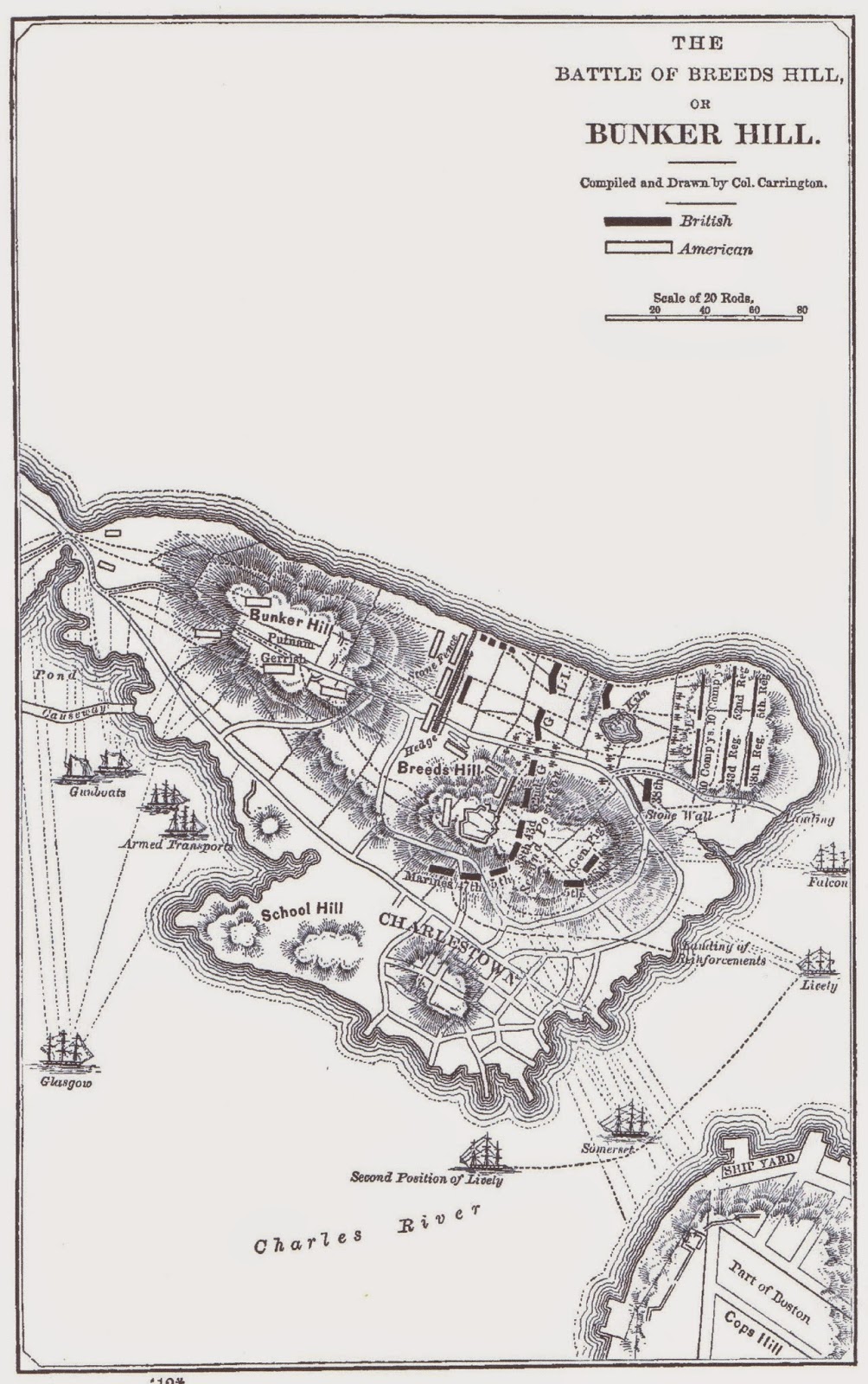The Battle of Bunker Hill took place on 17 June 1775. Mostly on and around Breed's Hill, during the Siege of Boston early in the American Revolutionary War.
Bunker's or Bunker Hill is an 1 10 feet high, near the neck of the peninsula on which Charlestown is situated, and which is divided from Boston by the Charles river. Learning that General Gage intended to occupy and fortify it, Colonel Prescott with 1,000 men was sent at night from Cambridge, the headquarters of the colonists, to anticipate the British. But they mistook, strange to say, for Bunker Hill another eminence called Breed's Hill, to the south of it, standing nearer to Charlestown and Boston, and entrenched themselves there before the morning. The eminence commanded the British camp, and, if armed with batteries, would have compelled the evacuation of Boston. When the entrenchment's were discovered, 3,000 regulars were sent to attack them, under Generals Howe and Pigot. Instead of landing at the isthmus of Charlestown so as to take the Americans in the rear, the troops, covered by the fire not only of the British batteries but of the fleet, marched straight up the hill. Two assaults on the entrenchment's failed, but General Clinton having joined the assailants with 400 men, a third was made. The Americans had exhausted their ammunition, and Colonel Prescott ordered a retreat, which was effected in good order, and though only one piece of artillery out of six could be carried off, they encamped at Prospect Hill, a mile from the battleground. As was natural, the loss of the assailants was the greater 226 killed and 828 wounded and missing, as against 115 killed and 337 wounded and prisoners on the American side. The battle had taken place in sight of Boston, whose roofs and steeples were crowded with spectators. These, besides the battle itself, had witnessed a sight which sank deep into the hearts of the American people, the burning of Charlestown by the British soldiers, provoked, it is said, by their having been fired on from its houses.
Orders of Battle
American Commander-in-chief William Prescott
1st Brigade, under the command of Israel Putman's
William Prescott's Massachusetts Regiment (250)
Fyre's Massachusetts Regiment (250)
Bridges's Massachusetts Regiment (250)
Israel Putman's 3rd Connecticut Regiment (200)
Massachusetts Artillery
2nd Brigade, under the command of Stark's
John Stark's 1st New Hampshire Regiment (300)
Reed's 3rd New Hampshire Regiment (300)
Massachusetts Artillery
3rd Brigade, under the command of
David Brewer's Massachusetts Regiment (150)
Jonathan Brewer's Massachusetts Regiment (150)
Little's Massachusetts Regiment (150)
Whitcomb's Massachusetts Regiment (150)
Dolittle's Massachusetts Regiment (150)
Sargent's Massachusetts Regiment (150)
Reed's Massachusetts Regiment (150)
Woodbridge's Massachusetts Regiment (150)
Massachusetts Artillery
British Commander-in-chief William Howe
1st Brigade, under the command of Robert Pigot
Clark's Light Infantry (300)
Abercrombie's Grenadiers (300)
5th Regiment of Foot (320)
38th Regiment of Foot (320)
Royal Artillery
2nd Brigade, under the command of Henry Clinton
43rd Regiment of Foot (320)
52nd Regiment of Foot (320)
Light Infantry (80)
Marine Battalion (160)
Grenadiers Battalion (80)
3rd Reserve Brigade, under the command of
47th Regiment of Foot (320)
1st Marine Battalion (400)
Copp's Hill Battery 3 x 28 pounders
Royal Navy Support, under the command of Samuel Graves
HMS Somerset
HMS Glasgow
HMS Lively
HMS Falcon
2 Floating Batteries
Armed Transport Symmetry
Download This Scenario
How it Played
Sources





No comments:
Post a Comment